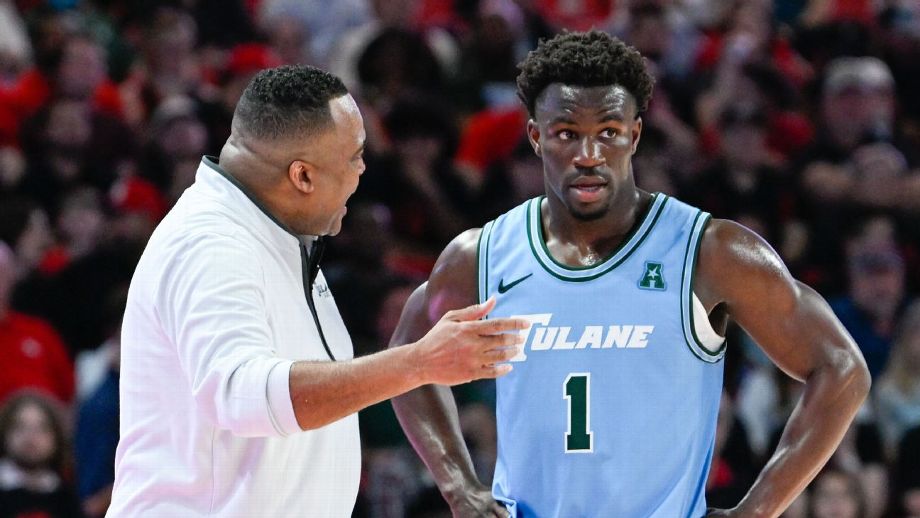
UPDATE: Mid-major basketball coaches are urgently evolving their strategies as the transfer portal reshapes college athletics. At the Peach Jam in North Augusta, South Carolina, Tulane coach Ron Hunter recently received an unexpected compliment from an SEC peer, highlighting the increasing trend of mid-majors serving as launchpads for players aiming for higher competition.
Hunter, who has successfully developed talent like former Duke star Sion James, was approached by a colleague who said, “You’re doing a hell of a job … getting kids ready for our level.” His mixed emotions capture the dilemma facing mid-major coaches navigating this new reality.
This shift is evident in the performance of players transitioning from mid-major to high-major programs. Last season, three of the Associated Press All-Americans—Mark Sears from Alabama, Johni Broome from Auburn, and Walter Clayton Jr. from Florida—were mid-major transfers. Alarmingly, 60% of the first- and second-team selections from high-major schools had previously played at mid-majors, indicating a significant trend.
As some coaches embrace this role as a developmental pathway, others remain hesitant. Wyoming’s coach Sundance Wicks noted, “You’ve got to get with the times,” recognizing the necessity to adapt rather than cling to outdated models. His analogy of selling CDs from a trunk underscores the urgency for coaches to innovate.
UAB’s Andy Kennedy faced a challenging offseason as 15 players exited the program following a successful season, which included 24 wins and a run to the American Conference tournament championship. Instead of lamenting these losses, Kennedy turned to a PowerPoint presentation to market his program as a stepping-stone to high-major success, emphasizing financial gains.
“Adapt or die, bro,” Kennedy stated. “I can be stubborn or adapt to current circumstances.”
With the introduction of NIL deals in 2021, the financial landscape has shifted dramatically. Top players at high-major programs can now earn average payouts exceeding $2.9 million for guards and $2.8 million for forwards, making the allure of transferring even more potent for mid-major athletes.
Coaches like Wicks envision a cooperative relationship between mid-major and high-major schools, akin to a minor league system in professional sports. This new model could transform player transfers from a challenge into a strategic advantage, benefiting all parties involved.
However, the pressure on mid-major programs intensifies. Drew Valentine, coach at Loyola Chicago, expressed frustration over high-major programs courting his top talent while still in season. “I had two guys showing me vanish mode DMs from coaches,” he revealed, underscoring the competitive landscape.
Valentine, while acknowledging the ambitions of his players, is firm about not using Loyola as a mere stepping stone. “I can’t do that. I personally can’t,” he stated, reflecting the ethical dilemma many coaches face in this evolving environment.
As mid-major programs seek to retain talent, they must also pitch the unique advantages they offer. Coaches like Johnny Tauer at St. Thomas-Minnesota leverage a prosperous alumni base and state-of-the-art facilities to attract recruits, while San Francisco’s Chris Gerlufsen promotes the lifestyle benefits of living in the Bay Area.
Despite these efforts, Hunter’s unexpected conversation with his SEC counterpart serves as a stark reminder of the challenges ahead. “I was left speechless,” Hunter admitted. “I had nothing to say to him. I didn’t know whether to say thank you or to get pissed at him.”
The landscape of college basketball is rapidly changing, and mid-major coaches are at a crossroads. As they adapt to the reality of the transfer portal and the financial implications of NIL, their strategies will define the future of their programs in the competitive world of college athletics. Stay tuned for more updates as this story develops.





